The "inside out" of the Mail.Ru Technology Forum 2011: High-tech in event management
The Mail.Ru Group 2011 Technologies Forum has ended, and now is the time to tell about the "wrong side" of the event itself. I think this can be interesting and useful to many.
Since the audience of this blog consists mainly of IT people, I will try first of all to tell about the organization of the Forum with a bias in technology and approaches that are close to me.
I will tell about the following topics:
')
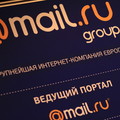

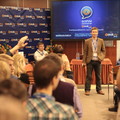
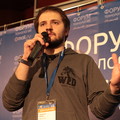
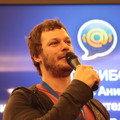

What to collect during registration? When designing a site, you should think carefully about the set of data collected at the registration stage, which fields should be required, in what format, which data should be entered. Then it will be too late to change. In particular, besides the directly entered data, the date and time of registration must be kept - this will allow to assess the rates of registration and conversion. E-mail addresses, telephones, and possibly companies with posts, need to be put in order as the database is filled up, putting it on automation as much as possible. For example, about 90% of our registration database has correct phones and e-mails. But there is another tip in the subject.
Sources of traffic . I highly recommend collecting traffic sources in registrations. This can be done automatically by distributing slightly different addresses to different sites (say, techforum.mail.ru/?roem ), and configure the site itself so that when you access it from this address, the referer and this parameter are saved in the session, and during registration this data was saved with the personal data entered by the user. The worse option is to analyze only the Referer, the address of the page from which the transition was made to the site.
How to evaluate the turnout? . More than 700 people out of 1283 registered came to our forum. The capacity of InfoSpace is about 700 people. When it comes more, there is nothing to breathe, and at dinner and in the halls an unpleasant crush is created. Well, it is obvious to everyone what is bad when you are reinsured, and as a result half of the hall is going to. What was done to get to the right number?
There are three parameters:
Having accumulated the first few hundred registrations, you can try to estimate the first two parameters from intermediate data, and predict the total number of registrations by the desired date in the future. Complexity is the last parameter. According to surveys for free events, it ranges from 50% to 70% (according to estimates of my colleagues involved in such conferences and according to data left over from last year’s Forum). With such a range of assessments, it was, of course, not easy to work.
There was also the fear that the accumulated registrations were “poor quality” and the turnout percentage might in fact be even lower. This risk had to be removed first. For this was coined ...
Telephone survey of the first thousand registered . Calling took just a couple of hours. By the end of the day we received the following data:
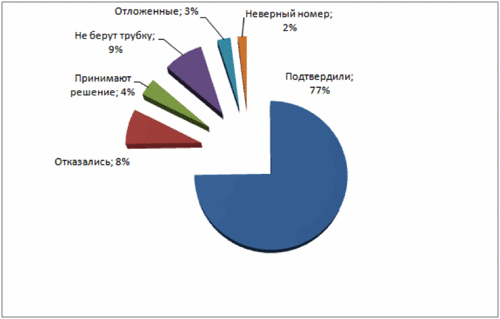
Calling through the call center gave, like, specific numbers. 77% - registered were convinced that next Wednesday they will find time and drive up. But still it is more a qualitative characteristic of the base. Because some people only said something for the operator to say goodbye with satisfaction, some - really doubted, but did not share doubts with the call center? In general, we received an orientation that cleans up some questions and raises others. For example, these data made us think about the situation, “what if more than half come? How do they all fit? How to prevent a second-hand talk? To have enough dinner for everyone? ” As a result, we decided to stop registration on Friday for 1200 registered and adjust razdatku and lunch.
We also received an accurate assessment of those who definitely will not appear at the conference. From them one person reached us. But an understanding of the number of refused allowed us to recruit almost a hundred more after the end of registration from among the new applicants, and at the same time save on individual handouts such as business cards and badges.
Conversion. Let's go back to the three conversion parameters mentioned above. In order to assess how much advertising is needed to attract the required number of registered and finish the registration on time, you need an understanding of the conversion of site visitors into registered, registered guests and invitees - actually arrived.
I got the following figures (and they are more or less stable for the second year already):
As you can see, 51% is different from 77%, which gave a telephone survey. And this is quite normal, because those who refused there will not come almost exactly, and those who agreed will come only with some probability. We have this probability was 66%. There were also those who doubted the telephone call, come or not. Their turnout was 11%.
It is reasonable to ask the question “After all, not everyone will come to the Forum in the morning? Someone will come to dinner, someone in the evening? And as a result, a whole thousand people can pass through the Forum without creating a crush! ” We could not answer this question before the event, we only assumed. Next year will be easier. Why?
How many will come in the morning? We got interesting numbers on how many people come to the free event in the morning, in the afternoon and in the afternoon. For this, I asked the recorders to highlight those who came to the forum with markers of different colors. At 11 and 13 o'clock, they orderly changed color to another. After analyzing the results, I got this alignment:
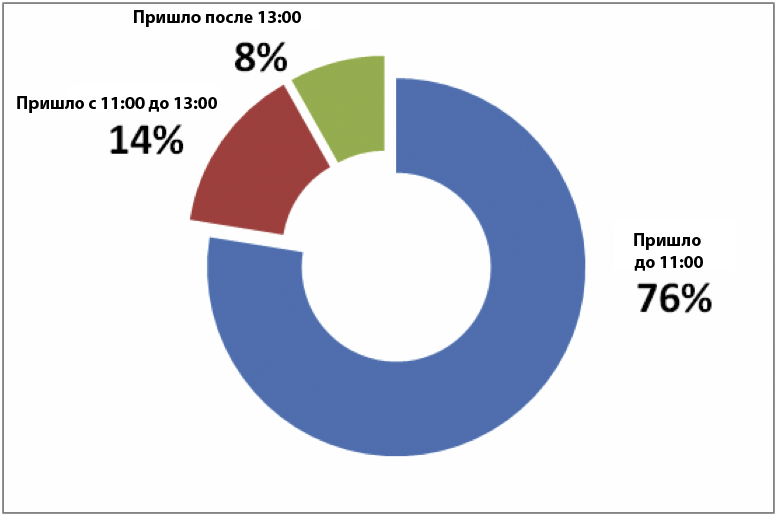
Of course, it was clear that the bulk will come in the morning. But here the figure is already useful - for calculating the load on the staff of the “registrars”.
How to avoid long queues at the registration. In order to avoid a “crush” in the morning, it was necessary to evenly distribute people among the tables of recorders. For this, I modeled options with 5,6,7,8,9,10 tables and the number of badges on each of the tables. This is what the first letter statistics look like.

It can be seen that under K you need four times more people than under T. Grouping letters is necessary in order, and not as horrible (a rare guest will understand the registration, where low-frequency letters are collected at the first table).
For the eight “tables”, the following comes out (vertically - the number of badges on the table):

If you increase by one table, then everything is more or less aligned:
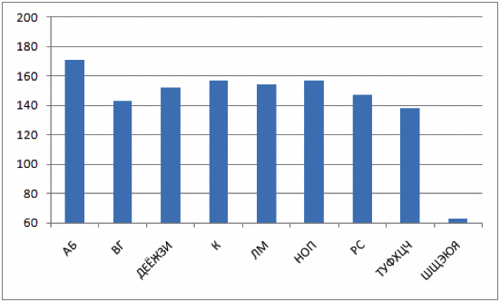
The distribution turned out to be more or less even, except for one table, with which nothing can be done - it is surrounded by very frequency letters.
How to improve business communications between the participants of the Forum . For each participant were printed business cards, 10 pieces. It would seem that the idea lies on the surface: after all, people come to seminars, exhibitions, conferences to communicate, and business cards here are the most convenient means for exchanging contacts. System administrators, programmers, testers often do not have them at all. Perhaps the most useful razdatka on the Forum.
When I thought through and worked out my idea with business cards, the printing houses refused one by one. Someone amused me with the extra cost “for one more field on the business card”. Someone undertook to manually type out all over 1200 sets. As a result, the performer was found, although he let us down a little with the deadlines and we sorted these business cards just before the start of the conference.
Technically, preparing layouts and print many different individual sets in small quantities is easy. You can do this by using the “Merging” function. It exists in Microsoft Word, in Corel Draw, in InDesign, and in many other document preparation systems. It works like this: in the layout, fields are entered, the program slips a table with values, and at the output we have a multi-page document, with fields already filled in. True, this function is not very popular, because it is poorly supported by manufacturers of DTP software, everywhere it works through the stump-deck. But if you understand a little, if you understand how much the programs do not “blow the roof”, then pretty good results are coming out. Thanks to us, our typography now knows how.
During the registration process, we collected data on positions and interests. This was necessary in order to understand whether this or that topic would be interesting to our audience, as well as to adjust advertising to attract those who would be interesting to us as listeners, and which for some reason lacked in the middle of registration. As a result, we got the following layout:
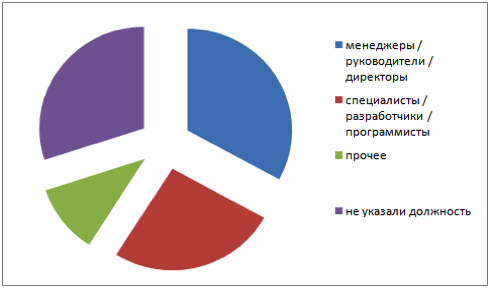
At the end, you can give another interesting statistics. The “women's share” of visitors to our Forum was at least 13%. This is a fairly high figure for the Forum, where code appears in presentations, and everywhere in the halls there is slang of system administrators and hardcore programmers.
Thus, at the end of the conference, we received a lot of data, allowing us to more accurately predict the turnout next year and select the most interesting speakers.
"Little technical detail"
As we we did authorization . Once a person can register, there must be a way for him to change his details and / or unsubscribe from the mailings, to refuse to participate in the Forum altogether. In order not to fence authorizations by logins and passwords, obviously redundant here, for this extremely rare situation authorization was made via e-mail: the user needs to go to the sent “secret” address from a letter in the mailbox, the lifetime of this address is calculated in dozens of minutes. The address leads to the edit form, only the mailbox owner can read the letter. Take advantage of this two or three. This solution turned out to be very successful, since it did not overload the interface and provided the necessary service.
The display of photos in real time . So briefly the idea sounds that it was possible to fully implement at the Mail.ru Group 2011 Technologies Forum. From shooting to the moment when the photo hits the network and seconds passed on the big screen in the lobby.
Our partners in video broadcasting, Espley, helped us a lot in implementing this idea.
The system worked as follows: the camera immediately after taking the photo was thrown onto a local server, the file with the photo immediately went to the technical FTP server. In the same place, on the server, Photofeed is raised in the RSS format, which reflects all the new files from the Photos directory. This RSS is used both by the system of displaying photos on a large screen, and by the system of uploading files to the service of Photos@Mail.ru. The last two systems store locally copies of photos, but in a smaller version.
Of course, the photographer is required, if possible, not to make unsuccessful shots, but, as we see from the Forum’s photo gallery, two Espley photographers can easily do this at once.
In the photo below, on the "Samsung" displays a photo taken, as the caption says, "a minute ago." To her left is the edge of the previous photo. As soon as a new one arrives, these will immediately give way to it, moving to the left. And on the background - the video broadcast from the first hall.

Photos began to appear immediately after the start of the forum, appeared on average every minute, during the day we received about 700 photos. Hundreds of people came to the photo gallery during the day.
I always wondered why the video of the event appeared on sites so late. In most cases, the delay in displaying presentations and videos ranges from a week and a half (Highload ++, presentation) to three to four weeks (Yandex YaC conference, videos and presentations). Many specialized events do not upload videos at all (RIF + CIB, RIW).
I wanted to learn how to publish video reports on the same day. After all, obviously, it is impossible to visit all the reports, and after three weeks everyone is forgetting about the conference, and it is too late to publish anything on the web about the event.
After a series of meetings with various companies, we chose ESPLEY . From the very beginning, this company very competently approached the issue, offered non-standard, but very effective solutions, and as a result earned the most courageous recommendations from our side. In addition, we found two more areas of cooperation with them - stenography (see below) and photography (see above).
What did we get in the end?
Wowza Media Server 3 software (http://wowza.com) was used as a “distribution” server. The server was installed on the site with a 2Gbit channel (although 200 Mb / s would be enough), 2 x Xeon E5520, 8Gb RAM. Setting up Wowza is extremely simple; literally “out of the box”, he does what he needs. After a series of tests, we finally believed in this decision, and in the end it worked perfectly. There were problems with sound: when we simultaneously turned on all our equipment, equipment of synchronous operators, equipment of the site, there appeared quiet “parasitic” noises, which we could not completely get rid of. However, it is not surprising: "Infospace" is simply "stuffed" with electronics - there are more than forty access points alone. But next time the problem must be overcome with more thorough testing and placement of equipment.
A day later, we made available video converted to a format for mobile devices. You can throw on the phone and watch / listen to the subway.
As a result, the online broadcast was watched by at least 600 people.
I had an assumption that questions from the listeners of the report arise not so much at the end, as during the speech. Someone writes them in a notebook, but in the end, only three or four lucky people have the opportunity to ask something. Many questions I want to ask while still on the site in advance. For the speakers themselves, it also looked comfortable. It seemed that they would look at the questions before the performance, and even during the performance.
But how to take questions from the floor? There is an old proven way with notes. It is both anonymous and simple. But not "tech", I wanted something more interesting. In the end, I tried a rather “slippery” idea to take questions not only from the site, but also from Twitter and SMS. They say that everyone has phones, twitter - almost a third of those present.
The system worked as follows:
As a result, from all three channels, “sms” / “twitter” / “form on the site”, all questions were collected in a single stream. At the moment, the speakers answered all the questions, their answers are posted on the site.
A small flaw on our part was that we didn’t “advertise” well enough the opportunity to ask a question otherwise than verbally. Also, for oral questions, we had a very serious motivator in the form of a gift ipad, and questions came mostly from the audience. True, it must be admitted that because of the opportunity to receive a prize, the question-answer sessions after the report were very interesting and “alive”, and not only those who left with gifts, but all the others also benefited from this.
It was the most courageous and experimental thing at the conference, which until today no one has heard. I have long “hatched” the idea of a transcript of all reports in real time, when texts on the site appear almost simultaneously with video broadcasting.
Of course, voice recognition, especially on our topics, is not an option. We focused on automated, not automatic, recognition.
That's what I wanted to do (and in the end - succeeded): the video stream is divided into small fragments, each of them is transferred to a separate stenographer, the stenographers work with the fragments, the editor - with ready-made pieces of texts.
Several meetings were held with suppliers of similar solutions. Unfortunately, in each of them something did not suit us: either a technical solution, then a price, or something else.
As a result, less than a week before the start, our video and photo partner ESPLEY found the strength to make the product we needed just a few days before the conference, and we organized “stenographers” for our part.
Here is a screenshot of one of the screens. On it, the decoding has just begun, the transcribers have not yet all connected. As the picture shows, three stenographers are working in parallel: the first has already deciphered the first two fragments, the second - the second two, the third - here it is simultaneously the editor - decodes the fifth fragment. On decoding 1 minute takes from 2 to 3 minutes. Since parallel decoding is supported, the system is easily “scaled”.
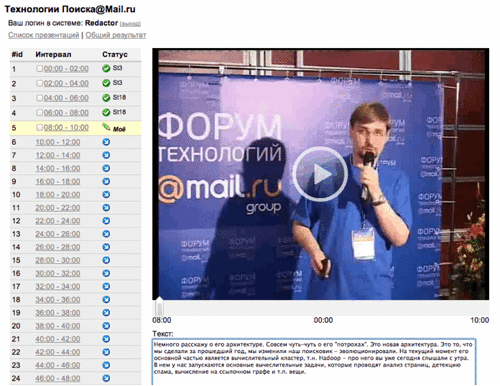
Now we can already boast that we got what is called proof of concept - confirmation that this technology and software can in principle be successfully applied at events. But the real full-fledged full-scale operation has not happened yet. The result today is a few decoded reports. We did not dare to publish them on the same day: we need to dilute the text with slides and photos, edit a little. In the near future we will show the "first swallow". If the initiative is supported by the audience, we will “press” the rest of the reports.
Aliyev Rauf,
Deputy Technical Director, Mail.Ru Group
Since the audience of this blog consists mainly of IT people, I will try first of all to tell about the organization of the Forum with a bias in technology and approaches that are close to me.
I will tell about the following topics:
- All about visitors : calculations, statistics, recommendations, conclusions, how turnout was estimated, how they fought queues, traffic conversion, etc.
- Everything about video broadcasting : software, hardware, how we managed to publish the first videos in less than an hour after the report, what were the problems, how they solved, etc.
- Everything about online photography : how a real-time photo publishing system works.
- Receive questions via Twitter / SMS / website
- Real-time logging: software, problems, solutions .
')






ALL ABOUT VISITORS
What to collect during registration? When designing a site, you should think carefully about the set of data collected at the registration stage, which fields should be required, in what format, which data should be entered. Then it will be too late to change. In particular, besides the directly entered data, the date and time of registration must be kept - this will allow to assess the rates of registration and conversion. E-mail addresses, telephones, and possibly companies with posts, need to be put in order as the database is filled up, putting it on automation as much as possible. For example, about 90% of our registration database has correct phones and e-mails. But there is another tip in the subject.
Sources of traffic . I highly recommend collecting traffic sources in registrations. This can be done automatically by distributing slightly different addresses to different sites (say, techforum.mail.ru/?roem ), and configure the site itself so that when you access it from this address, the referer and this parameter are saved in the session, and during registration this data was saved with the personal data entered by the user. The worse option is to analyze only the Referer, the address of the page from which the transition was made to the site.
How to evaluate the turnout? . More than 700 people out of 1283 registered came to our forum. The capacity of InfoSpace is about 700 people. When it comes more, there is nothing to breathe, and at dinner and in the halls an unpleasant crush is created. Well, it is obvious to everyone what is bad when you are reinsured, and as a result half of the hall is going to. What was done to get to the right number?
There are three parameters:
- conversion of incoming to the site in registered (ie, the percentage of quality of traffic);
- conversion of registered guests (i.e., percentage of high-quality registrations);
- conversion of invitees into actual arrivals (i.e., percentage of actual attendance).
Having accumulated the first few hundred registrations, you can try to estimate the first two parameters from intermediate data, and predict the total number of registrations by the desired date in the future. Complexity is the last parameter. According to surveys for free events, it ranges from 50% to 70% (according to estimates of my colleagues involved in such conferences and according to data left over from last year’s Forum). With such a range of assessments, it was, of course, not easy to work.
There was also the fear that the accumulated registrations were “poor quality” and the turnout percentage might in fact be even lower. This risk had to be removed first. For this was coined ...
Telephone survey of the first thousand registered . Calling took just a couple of hours. By the end of the day we received the following data:

Calling through the call center gave, like, specific numbers. 77% - registered were convinced that next Wednesday they will find time and drive up. But still it is more a qualitative characteristic of the base. Because some people only said something for the operator to say goodbye with satisfaction, some - really doubted, but did not share doubts with the call center? In general, we received an orientation that cleans up some questions and raises others. For example, these data made us think about the situation, “what if more than half come? How do they all fit? How to prevent a second-hand talk? To have enough dinner for everyone? ” As a result, we decided to stop registration on Friday for 1200 registered and adjust razdatku and lunch.
We also received an accurate assessment of those who definitely will not appear at the conference. From them one person reached us. But an understanding of the number of refused allowed us to recruit almost a hundred more after the end of registration from among the new applicants, and at the same time save on individual handouts such as business cards and badges.
Conversion. Let's go back to the three conversion parameters mentioned above. In order to assess how much advertising is needed to attract the required number of registered and finish the registration on time, you need an understanding of the conversion of site visitors into registered, registered guests and invitees - actually arrived.
I got the following figures (and they are more or less stable for the second year already):
- Conversion of visitors to the site into registered (on average) - 10%
- Converted to invitees - 95%
- Conversion of guests into real ones - 51%
As you can see, 51% is different from 77%, which gave a telephone survey. And this is quite normal, because those who refused there will not come almost exactly, and those who agreed will come only with some probability. We have this probability was 66%. There were also those who doubted the telephone call, come or not. Their turnout was 11%.
It is reasonable to ask the question “After all, not everyone will come to the Forum in the morning? Someone will come to dinner, someone in the evening? And as a result, a whole thousand people can pass through the Forum without creating a crush! ” We could not answer this question before the event, we only assumed. Next year will be easier. Why?
How many will come in the morning? We got interesting numbers on how many people come to the free event in the morning, in the afternoon and in the afternoon. For this, I asked the recorders to highlight those who came to the forum with markers of different colors. At 11 and 13 o'clock, they orderly changed color to another. After analyzing the results, I got this alignment:

Of course, it was clear that the bulk will come in the morning. But here the figure is already useful - for calculating the load on the staff of the “registrars”.
How to avoid long queues at the registration. In order to avoid a “crush” in the morning, it was necessary to evenly distribute people among the tables of recorders. For this, I modeled options with 5,6,7,8,9,10 tables and the number of badges on each of the tables. This is what the first letter statistics look like.

It can be seen that under K you need four times more people than under T. Grouping letters is necessary in order, and not as horrible (a rare guest will understand the registration, where low-frequency letters are collected at the first table).
For the eight “tables”, the following comes out (vertically - the number of badges on the table):

If you increase by one table, then everything is more or less aligned:

The distribution turned out to be more or less even, except for one table, with which nothing can be done - it is surrounded by very frequency letters.
How to improve business communications between the participants of the Forum . For each participant were printed business cards, 10 pieces. It would seem that the idea lies on the surface: after all, people come to seminars, exhibitions, conferences to communicate, and business cards here are the most convenient means for exchanging contacts. System administrators, programmers, testers often do not have them at all. Perhaps the most useful razdatka on the Forum.
When I thought through and worked out my idea with business cards, the printing houses refused one by one. Someone amused me with the extra cost “for one more field on the business card”. Someone undertook to manually type out all over 1200 sets. As a result, the performer was found, although he let us down a little with the deadlines and we sorted these business cards just before the start of the conference.
Technically, preparing layouts and print many different individual sets in small quantities is easy. You can do this by using the “Merging” function. It exists in Microsoft Word, in Corel Draw, in InDesign, and in many other document preparation systems. It works like this: in the layout, fields are entered, the program slips a table with values, and at the output we have a multi-page document, with fields already filled in. True, this function is not very popular, because it is poorly supported by manufacturers of DTP software, everywhere it works through the stump-deck. But if you understand a little, if you understand how much the programs do not “blow the roof”, then pretty good results are coming out. Thanks to us, our typography now knows how.
During the registration process, we collected data on positions and interests. This was necessary in order to understand whether this or that topic would be interesting to our audience, as well as to adjust advertising to attract those who would be interesting to us as listeners, and which for some reason lacked in the middle of registration. As a result, we got the following layout:

At the end, you can give another interesting statistics. The “women's share” of visitors to our Forum was at least 13%. This is a fairly high figure for the Forum, where code appears in presentations, and everywhere in the halls there is slang of system administrators and hardcore programmers.
Thus, at the end of the conference, we received a lot of data, allowing us to more accurately predict the turnout next year and select the most interesting speakers.
"Little technical detail"
As we we did authorization . Once a person can register, there must be a way for him to change his details and / or unsubscribe from the mailings, to refuse to participate in the Forum altogether. In order not to fence authorizations by logins and passwords, obviously redundant here, for this extremely rare situation authorization was made via e-mail: the user needs to go to the sent “secret” address from a letter in the mailbox, the lifetime of this address is calculated in dozens of minutes. The address leads to the edit form, only the mailbox owner can read the letter. Take advantage of this two or three. This solution turned out to be very successful, since it did not overload the interface and provided the necessary service.
PHOTOGRAPHY
The display of photos in real time . So briefly the idea sounds that it was possible to fully implement at the Mail.ru Group 2011 Technologies Forum. From shooting to the moment when the photo hits the network and seconds passed on the big screen in the lobby.
Our partners in video broadcasting, Espley, helped us a lot in implementing this idea.
The system worked as follows: the camera immediately after taking the photo was thrown onto a local server, the file with the photo immediately went to the technical FTP server. In the same place, on the server, Photofeed is raised in the RSS format, which reflects all the new files from the Photos directory. This RSS is used both by the system of displaying photos on a large screen, and by the system of uploading files to the service of Photos@Mail.ru. The last two systems store locally copies of photos, but in a smaller version.
Of course, the photographer is required, if possible, not to make unsuccessful shots, but, as we see from the Forum’s photo gallery, two Espley photographers can easily do this at once.
In the photo below, on the "Samsung" displays a photo taken, as the caption says, "a minute ago." To her left is the edge of the previous photo. As soon as a new one arrives, these will immediately give way to it, moving to the left. And on the background - the video broadcast from the first hall.

Photos began to appear immediately after the start of the forum, appeared on average every minute, during the day we received about 700 photos. Hundreds of people came to the photo gallery during the day.
VIDEO AND VIDEO RECORDING
I always wondered why the video of the event appeared on sites so late. In most cases, the delay in displaying presentations and videos ranges from a week and a half (Highload ++, presentation) to three to four weeks (Yandex YaC conference, videos and presentations). Many specialized events do not upload videos at all (RIF + CIB, RIW).
I wanted to learn how to publish video reports on the same day. After all, obviously, it is impossible to visit all the reports, and after three weeks everyone is forgetting about the conference, and it is too late to publish anything on the web about the event.
After a series of meetings with various companies, we chose ESPLEY . From the very beginning, this company very competently approached the issue, offered non-standard, but very effective solutions, and as a result earned the most courageous recommendations from our side. In addition, we found two more areas of cooperation with them - stenography (see below) and photography (see above).
What did we get in the end?
- Four professional HD cameras shot reports from two rooms, recording them in high quality on film at the same time;
- Two laptops aired the presentation slides not only on large screens, but also on equipment for broadcasting video on the Internet;
- Two directors of the online broadcast reduced the video from the cameras and presentation laptops of the signal into two video streams, one per room;
- As a result, the server distributing video to the Internet took four streams - two with a “live” picture, and two with only slides. The site allowed to watch both videos in parallel;
- On the big screen in the lobby, a video was broadcast from one of the halls.
- After the report, the video was automatically converted to the desired format and copied to the storage, used, in particular, by stenographers;
- When a new video appeared in the repository, it was transferred to My World @ Mail.Ru, from where it was transferred via the embedding mechanism to the report page on the official website. After the conference, the section “Video Broadcasting” was changed to the section “Video Recordings”, where all the videos and presentations on one page were collected.
Wowza Media Server 3 software (http://wowza.com) was used as a “distribution” server. The server was installed on the site with a 2Gbit channel (although 200 Mb / s would be enough), 2 x Xeon E5520, 8Gb RAM. Setting up Wowza is extremely simple; literally “out of the box”, he does what he needs. After a series of tests, we finally believed in this decision, and in the end it worked perfectly. There were problems with sound: when we simultaneously turned on all our equipment, equipment of synchronous operators, equipment of the site, there appeared quiet “parasitic” noises, which we could not completely get rid of. However, it is not surprising: "Infospace" is simply "stuffed" with electronics - there are more than forty access points alone. But next time the problem must be overcome with more thorough testing and placement of equipment.
A day later, we made available video converted to a format for mobile devices. You can throw on the phone and watch / listen to the subway.
As a result, the online broadcast was watched by at least 600 people.
"ASK A QUESTION"
I had an assumption that questions from the listeners of the report arise not so much at the end, as during the speech. Someone writes them in a notebook, but in the end, only three or four lucky people have the opportunity to ask something. Many questions I want to ask while still on the site in advance. For the speakers themselves, it also looked comfortable. It seemed that they would look at the questions before the performance, and even during the performance.
But how to take questions from the floor? There is an old proven way with notes. It is both anonymous and simple. But not "tech", I wanted something more interesting. In the end, I tried a rather “slippery” idea to take questions not only from the site, but also from Twitter and SMS. They say that everyone has phones, twitter - almost a third of those present.
The system worked as follows:
- If the message is sent to Twitter by any user with the hash tags # ZAL1 or # ZAL2, then it definitely falls into the question line. Moreover, the report to which the question was asked is selected according to the time of receipt of this tweet, and knowing the hall and the time, we know for sure what kind of presentation the question was asked. Also in the database is saved the nickname of the tweet user who asked the question.
- if the message was sent by SMS, then the hall was determined from the sms-message itself: we asked to start it with the words ZAL1 / ZAL2 / HALL1 / HALL2. The report itself was also identified by the time the message was sent.
- if the message was sent from the form on the website, the report was chosen by the driver himself, but the default report already set the current report.
As a result, from all three channels, “sms” / “twitter” / “form on the site”, all questions were collected in a single stream. At the moment, the speakers answered all the questions, their answers are posted on the site.
A small flaw on our part was that we didn’t “advertise” well enough the opportunity to ask a question otherwise than verbally. Also, for oral questions, we had a very serious motivator in the form of a gift ipad, and questions came mostly from the audience. True, it must be admitted that because of the opportunity to receive a prize, the question-answer sessions after the report were very interesting and “alive”, and not only those who left with gifts, but all the others also benefited from this.
STATCHING REPORTS
It was the most courageous and experimental thing at the conference, which until today no one has heard. I have long “hatched” the idea of a transcript of all reports in real time, when texts on the site appear almost simultaneously with video broadcasting.
Of course, voice recognition, especially on our topics, is not an option. We focused on automated, not automatic, recognition.
That's what I wanted to do (and in the end - succeeded): the video stream is divided into small fragments, each of them is transferred to a separate stenographer, the stenographers work with the fragments, the editor - with ready-made pieces of texts.
Several meetings were held with suppliers of similar solutions. Unfortunately, in each of them something did not suit us: either a technical solution, then a price, or something else.
As a result, less than a week before the start, our video and photo partner ESPLEY found the strength to make the product we needed just a few days before the conference, and we organized “stenographers” for our part.
Here is a screenshot of one of the screens. On it, the decoding has just begun, the transcribers have not yet all connected. As the picture shows, three stenographers are working in parallel: the first has already deciphered the first two fragments, the second - the second two, the third - here it is simultaneously the editor - decodes the fifth fragment. On decoding 1 minute takes from 2 to 3 minutes. Since parallel decoding is supported, the system is easily “scaled”.

Now we can already boast that we got what is called proof of concept - confirmation that this technology and software can in principle be successfully applied at events. But the real full-fledged full-scale operation has not happened yet. The result today is a few decoded reports. We did not dare to publish them on the same day: we need to dilute the text with slides and photos, edit a little. In the near future we will show the "first swallow". If the initiative is supported by the audience, we will “press” the rest of the reports.
Aliyev Rauf,
Deputy Technical Director, Mail.Ru Group
Source: https://habr.com/ru/post/132953/
All Articles